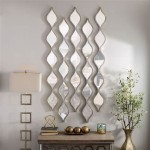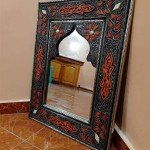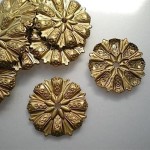The Vanity Dresser With Mirror: A Timeless Icon of the 1920s
The 1920s, a period of roaring economic prosperity and burgeoning cultural change, witnessed a significant shift in the design of furniture, particularly for bedrooms. The vanity dresser with mirror emerged as a prominent fixture, reflecting the changing role of women in society and the growing emphasis on personal style and grooming. This article will explore the unique characteristics of the 1920s vanity dresser with mirror, examining its design elements, materials, and cultural significance.
The Rise of the Modern Woman and the Emphasis on Personal Style
The 1920s witnessed a burgeoning movement toward women's suffrage, employment opportunities, and individual expression. The flapper era, characterized by its emphasis on femininity, style, and independent living, fueled a rise in personal grooming routines. Women invested in makeup, hair care, and fashionable attire, thus demanding dedicated spaces for these activities. The vanity dresser with mirror, with its specialized storage compartments, convenient mirror, and elegant design, became a symbol of this shift, catering to the modern woman's desire for a dedicated space for personal grooming and self-expression.
Design Elements and Materials
The 1920s vanity dresser with mirror bore distinct design elements that reflected the artistic and cultural trends of the era. The Art Deco movement, which emphasized geometric patterns, stylized motifs, and bold colors, heavily influenced the design of these dressers. Common features included:
- Geometric Shapes: Dressers often featured geometric patterns like chevrons, zigzags, and stylized sunbursts, reflecting the Art Deco aesthetic.
- Inlay and Marquetry: Intricate inlay and marquetry techniques were used to create decorative patterns and motifs on the dresser surfaces, adding visual interest and sophistication.
- Mirror Frames: Mirrors were frequently adorned with elaborate frames, often combining geometric shapes, metal accents, and polished wood.
- Materials: Popular materials included mahogany, walnut, and oak, often polished to a high sheen. Metal accents, such as brass or chrome, were frequently used on drawer pulls, hinges, and mirror frames.
While the Art Deco aesthetic was prevalent, the vanity dresser also embraced other design styles of the era. Some dressers exhibited a more streamlined, minimalist approach, reflecting the burgeoning modernism movement. These dressers often featured simple lines, clean surfaces, and functional storage solutions.
The Vanity Dresser as a Symbol of Status and Domesticity
The 1920s vanity dresser, with its elegant design, intricate details, and high quality materials, became a symbol of status and domesticity. It showcased not only the homeowner's taste and affluence but also their commitment to personal style and a modern lifestyle. The vanity dresser served as a focal point in the bedroom, a testament to the evolving role of women in society and the changing expectations of domestic spaces.
The 1920s vanity dresser with mirror remains a timeless icon, representing a period of significant cultural change and a shift in the way women approached their personal appearance and domesticity. Its design elements, materials, and historical context continue to inspire and inform contemporary furniture design, demonstrating the enduring influence of this iconic piece on the evolution of interior design.

Sold 1920s Antique Vanity With Mirror And Stool Dressing

Sold 1920s Antique Vanity With Mirror And Stool Dressing

Sold 1920s Antique Vanity With Mirror And Stool Dressing

1920s Art Deco Walnut Vanity With Mirror Stool 2 Pieces

Found On Bing From Www Com Vanity Table Vintage Dressing Antique

Sold 1920s Antique Vanity With Mirror And Stool Dressing

Vintage Vanity Roundup The Craft Blogger

Sold 1920s Antique Vanity Dressing Table

Be A Lady Vintage Vanity Cool Chandeliers Furniture Styles

Sold 1920s Antique Vanity With Mirror And Stool Dressing








